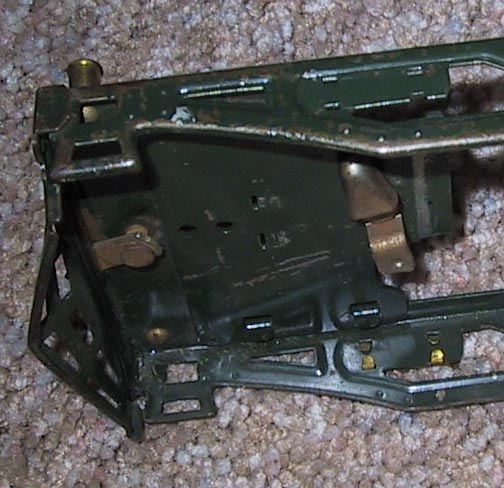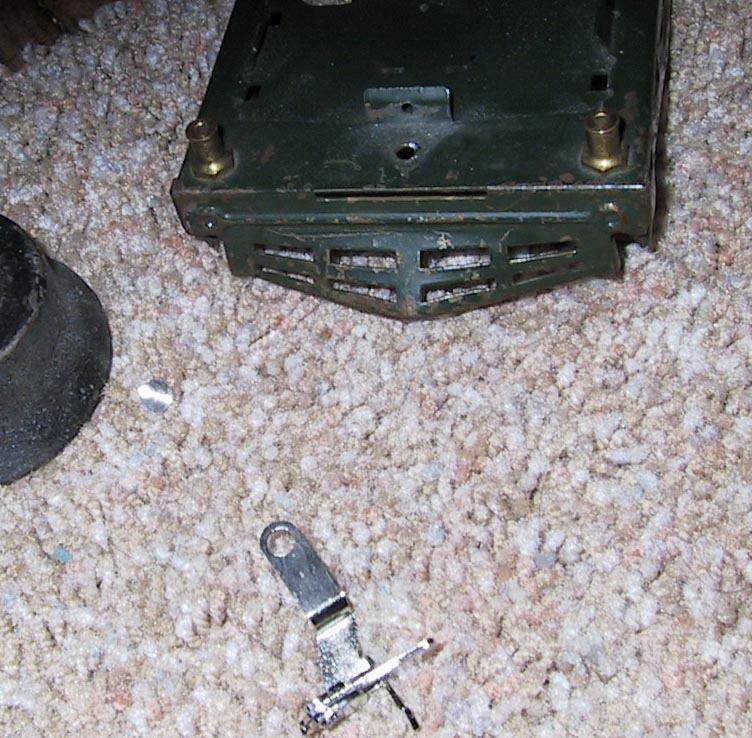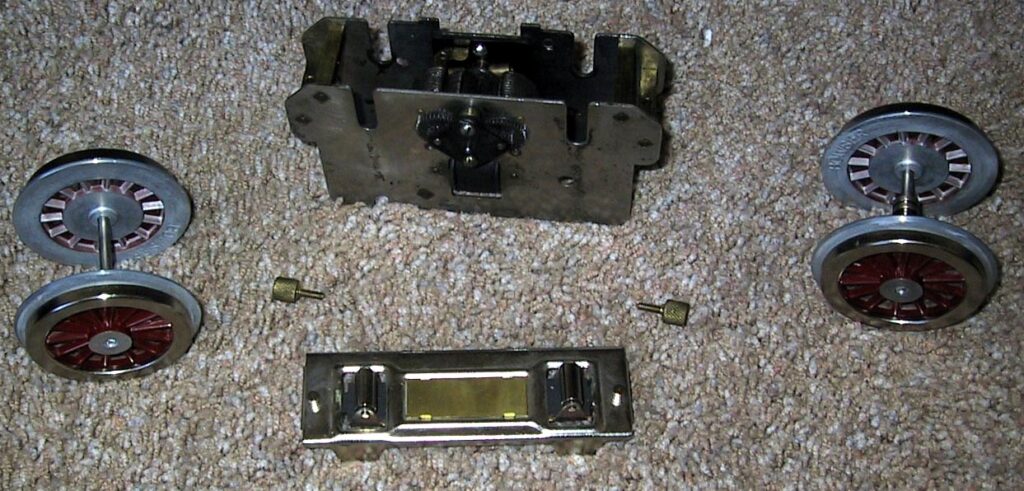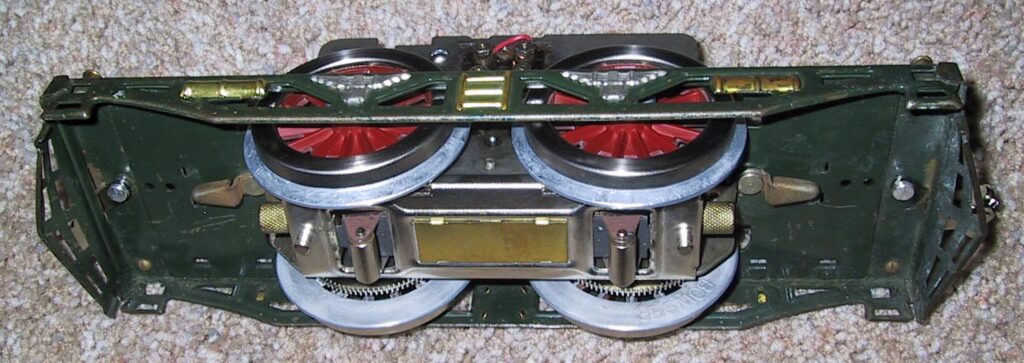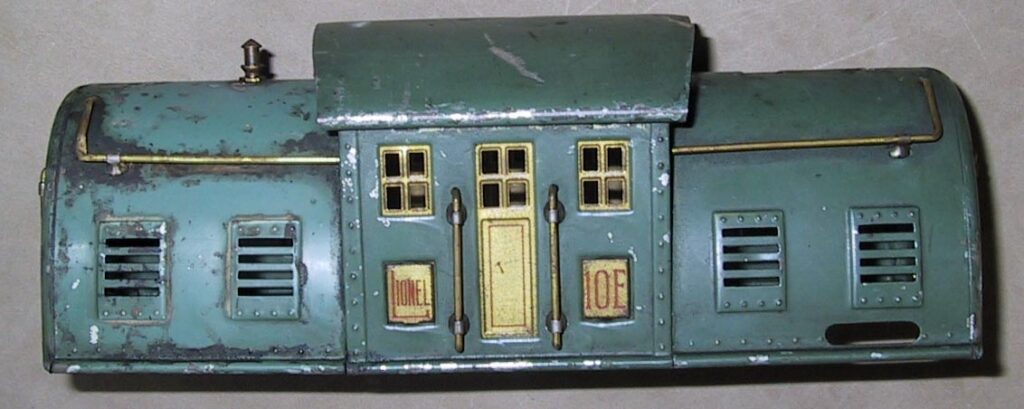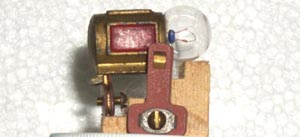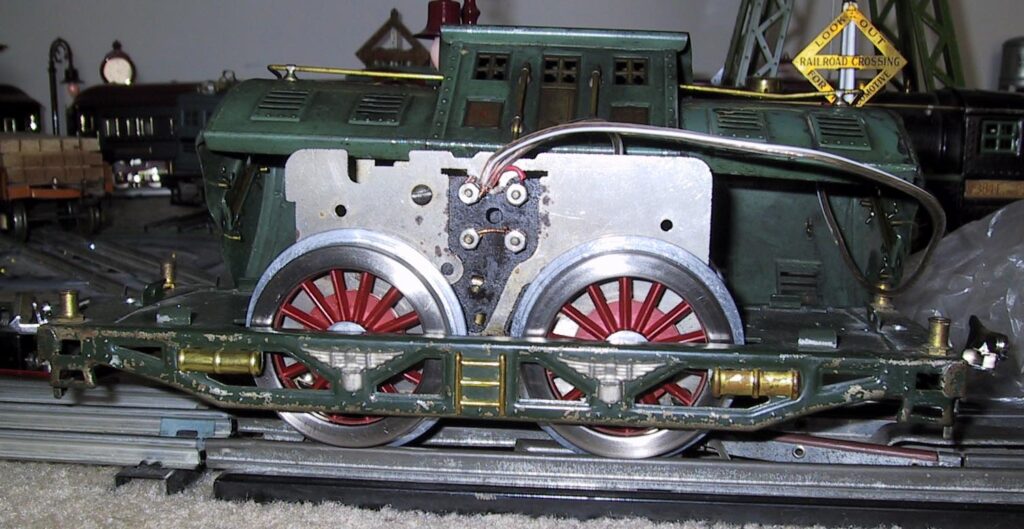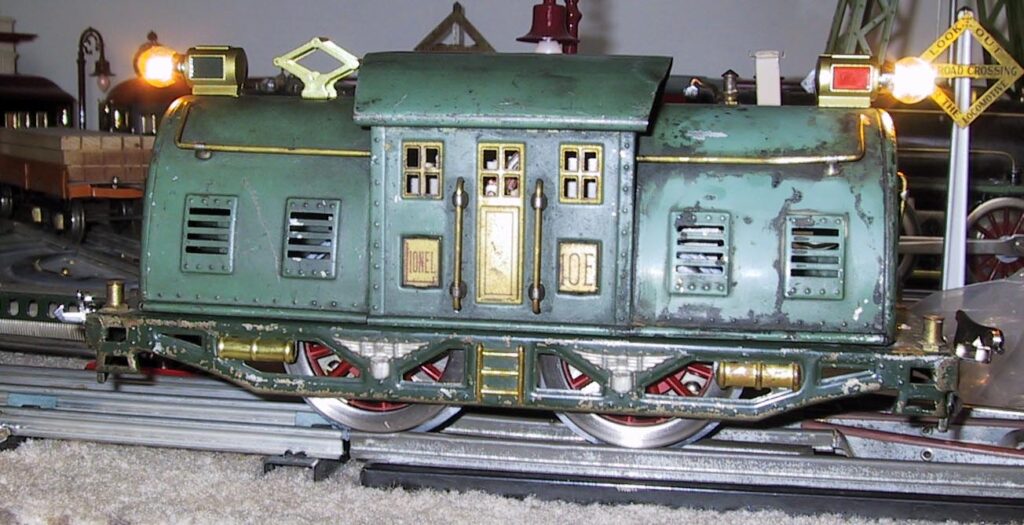Building a 10E Bild-A-Loco
by Bradley Kaplan
The Standard gauge #10 is one of the most common Standard gauge engine. (The engine is designated 10E) A #10 is powered by a Standard gauge Super motor. In the late 1920s and 1930s Lionel had two Standard Gauge motors, they are Bild-A-Loco motors and Super Motors. Both motor units are the same size and look similar. They are both 4-wheel drive mechanisms. The Bild-A-Loco motor is considered more high end as it is designed to be taken apart with thumbscrews and a screwdirver (there are no loose wires) and can be put in a special frame for use in powering other toys. For the most part the Bild-A-Loco motos were locked to the engine frames with clips, while the Super Motors the engine frame is screwed to the motor. Engines that take Bild-A-Loco motos are often labeled Bild-A-Loco, These motors, although the same size, are not interchangable due to their different mounting methods.
A very rare version of the #10E engine has a redesigned frame to hold a Bild-A-Loco moto. This Bild-A-Loco #10E was sold in department store special sets for Macy’s. On E-bay I noticed a frame for a Bild-A-Loco #10E. In my parts bin, I had an extra Bild-A-Loco moto I picked up in York for $30. It looked to be a fun project to recreate this engine.
I bid on the frame and won it for $40
The frame arrived and it had the couplers broken off and missing a piece of ornamental trim. The locking clips for the Bild-A-Loco were in perfect condition
The missing tank and the couplers are available from almost any parts dealer. I drilled the broken coupler rivets and put the new couplers in place with new rivets and used a center punch to flatten the top of the rivet to secure it to the frame.
The trim piece just fits right onto the frame and the tabs fold down to secure it to the frame.
The Bild-A-Loco moto I picked up in York did not have any wheels, axles, wheel gears, bearings or roller pickup plate. All these parts are common and picked up from parts dealers.
These parts come disassembled and one must assemble them. I find the best way to attach wheels to the axle is to just pound them on with a hammer. Many people seem to have problems attaching the gears to the powered wheels. Often they glue the gear to the wheel, and the glue joint usually breaks after running. I find the best method is to take the hub that goes thru the gear and use a center punch to flatten the hub securing the gear to the wheel.
With the Bild-A-Loco moto, I then used the thumbscrews to secure the contact shoe assembly to the motor, this locks the axles and bearings in place.
I then used the locking clips to secure the motor to the #10E frame.
I was able to locate a cab for a #10E in the proper peacock color for $30.
(Unfortunately it was missing the orange stripe on the bottom bead.)
Trim like the headlights and pantograph were missing from this piece but they are also common parts available from parts dealers.
Lionel has a special “T” mounting clamp that are used to put power to the headlight. I decided not to use the T mount and ran a wire through the headlight with an insulated disk for the light bulb to rest against.
After mounting the headlights, I attached them to the motor to give them power. This engine is supposed to have a pendulum two-position reverse unit. A friend of mine who is on vacation for several months happens to have extra Pendulum reverse units and is willing to donate one for this project. So until I get the reverse unit, this will be hardwired for one direction operation.
I ended up with a very rare and desirable piece for a fraction of what it would normally cost.


